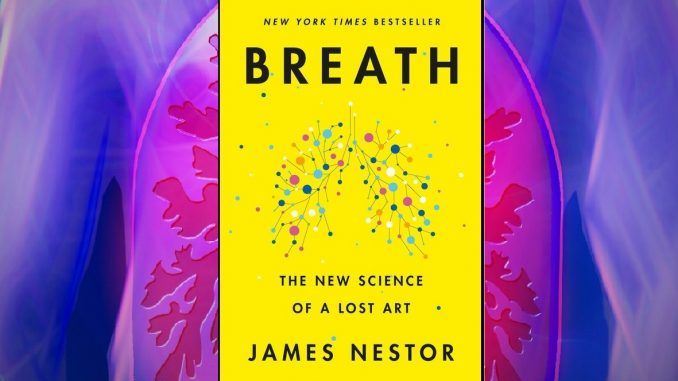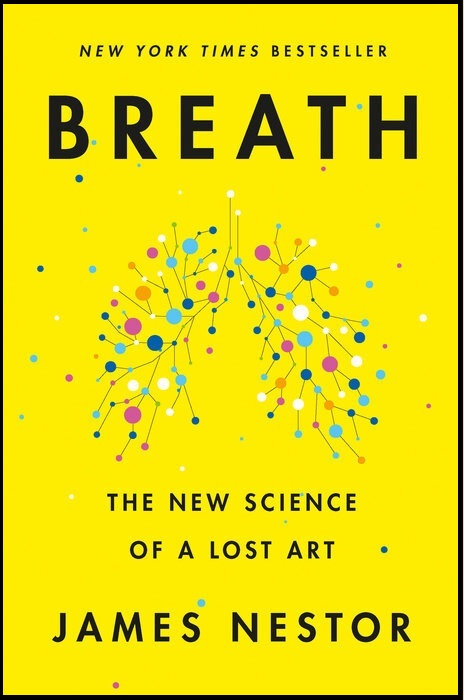
This is one of the most important books I’ve read for my health in the last few years. As someone echoed in the book itself, it is on par with the excellent Why We Sleep by Matthew Walker. Breath takes an in depth look at how recent changes to our lifestyle have had a negative effect on the way we breathe, with potentially catastrophic consequences. The main focus is on the recent rise of “mouth breathing” – the tendency to use our mouths as a primary way of breathing, and the effects that’s having on our health.
Mouth breathing causes the airways and mouth to shrink over time, aided by insufficient stimulus from chewing (our diets have become “softer” in the last few hundred years). This increases the likelihood of snoring, sleep apnoea and other health conditions. The author embarks on a personal journey to reverse these effects, through various breathing exercises (including the Wim Hof method), jaw strengthening exercises, mouth taping and a whole host of other niche experiments.
As the title suggests, this information is not new, in fact it is thousands of years old. As a population we seem to have lost our way, and this book helps shed light on the practices that can help make a positive impact on almost everyone’s health and well-being.
Breath: The New Science of a Lost Art by James Nestor

PRO TIP: Take notes! When you read a book, use a blank sheet of paper as a bookmark. Write down any interesting facts and information from the book. This condenses a whole book into 3-4 pages of key notes that are important and relevant to you.
My Notes
- 40% of today’s population suffers from chronic nasal obstruction, and around half of us are habitual mouth breathers, with females and children suffering the most. The causes are many: dry air, stress, inflammation, allergies, pollution, pharmaceuticals.
- Inhaling air through the mouth decreases pressure, which causes the soft tissues in the back of the mouth to become loose and flex inward, creating less space and making breathing more difficult. Mouth breathing begets more mouth breathing.
- Inhaling from the nose forces air against the flabby tissues at the back of the throat, making the airways wider and breathing easier. These tissues and muscles eventually get “toned” to stay in this open and wide position. Nasal breathing begets more nasal breathing.
- 90% of children have acquired some degree of deformity in their mouths and noses. 45% of adults snore occasionally, 25% of the population snores constantly. 25% of over 30’s in America have sleep apnoea, potentially 80% of moderate or severe cases are undiagnosed.
- The right nostril is a gas pedal. Inhaling through this channel, circulation speeds up, the body gets hotter, cortisol, BP, HR all increase. It activates the sympathetic nervous system, putting the body in a more elevated state of alertness and readiness.
- The left nostril is the brake. It has a parasympathetic connection, lowers BP, cools the body, reduces anxiety. It shifts blood flow to improve creative thought.
- When breathing at a normal rate, lungs will absorb only about 25% of the available oxygen in the air. The majority is exhaled back out, so by taking longer breaths we allow our lungs to soak up more in fewer breaths.
- The most efficient breathing rhythm is 5.5 seconds in and 5.5 seconds out. This is known as the “perfect breath”.
- While sympathetic states can be achieved in a single minute, it can take up to an hour for the parasympathetic response to bring us back down again
- Check out a comprehensive set of breathing methods at mrjamesnestor.com/breath

